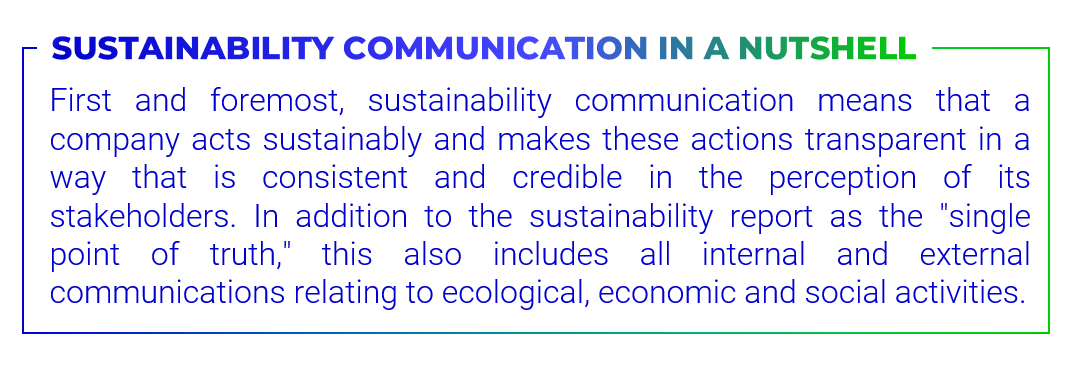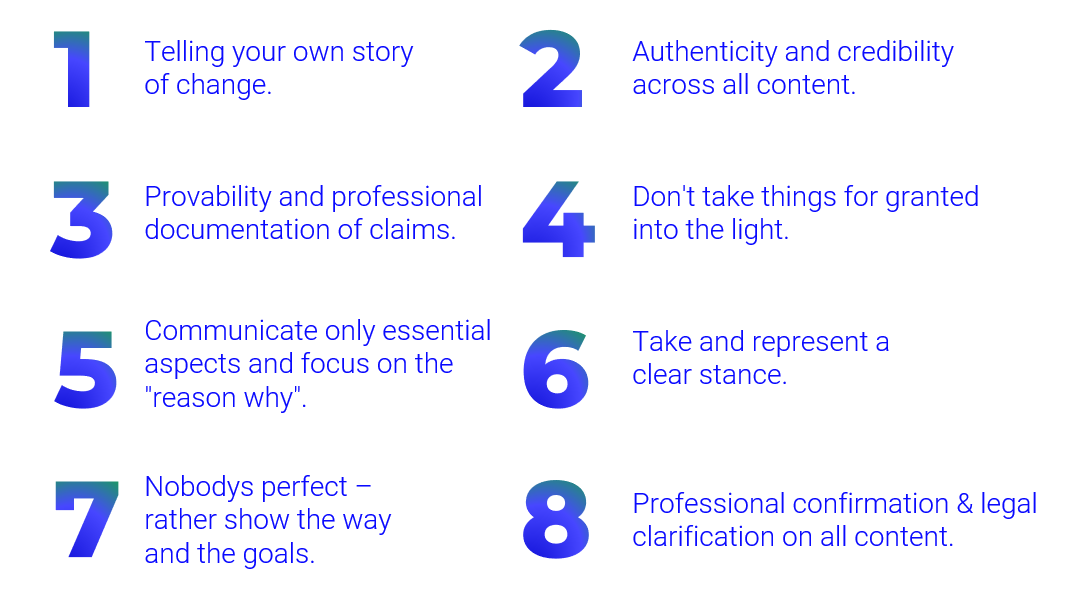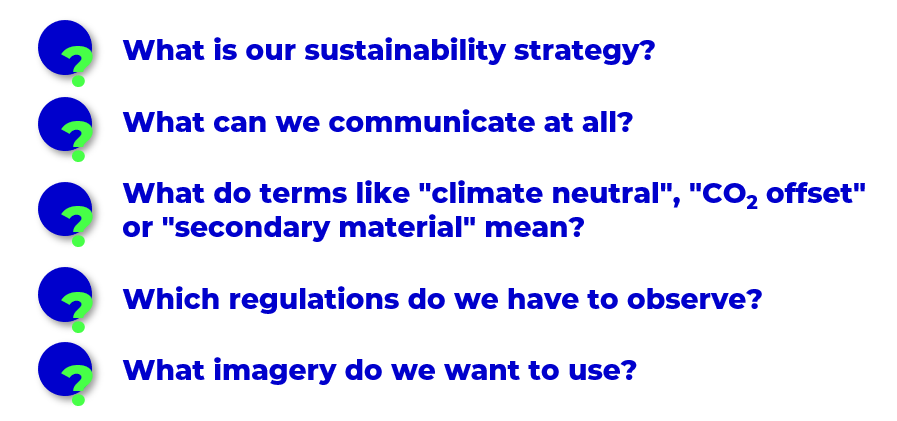The lights turn green – full speed ahead. Whether we are flipping through the newspaper, turning on the TV, or scrolling through our social media channels, companies are increasingly communicating their sustainability activities. Some through elaborate, multi-million-dollar campaigns, others do it without even questioning it, quietly, as if it were their reason for existence anyway and not a special “add-on.” But how crucial is sustainability communication? Should companies be riding the tide of green messages? And if so, how?
WHY IS THERE NO WAY AROUND SUSTAINABILITY COMMUNICATION TODAY?
Everyone is communicating sustainability and this has different reasons:
- Sustainability or neo-ecology (Zukunftsinstitut) is one of the proclaimed megatrends and hot topic in the media.
- New generations demand change, especially with regard to the prevailing capitalism.
- Sustainability is on the global and political agenda and new laws obligate organizations to act sustainably.
- The public expects companies to adopt a responsible stance towards the environment and society.
- A conscious lifestyle is becoming increasingly important for consumers, and they are willing to pay more for it. This applies in particular to the areas of fair fashion, vegetarian/vegan nutrition and sustainable mobility.
These facts already demonstrate why there is currently a “boom” towards more communication of one’s own responsibility. But what exactly is sustainability communication and what lies behind this discipline of communication?

As described, what matters is credible, transparent and consistent communication. And it is precisely these aspects that present companies with major challenges.
THE PROBLEM WITH SUSTAINABILITY
The term “sustainable” is now used in an inflationary manner. Companies quickly decide that they absolutely have to do something and they must tell people about it. Regardless of what reflects their own aspirations and what messages are relevant to their target groups. At the same time, there is often a lack of realistic self-assessment of how sustainable their own actions really are. Selective activities are quickly identified and spread across all channels by sustainably appearing images of nature and terms such as “climate neutral” or “CO2-free”.
This leads to distrust among many recipients. Which companies are truly sustainably oriented, and which are merely economically motivated? What is credible in sustainability communication and which advertisements merely wash an image green or colorful?
And it’s not just consumers who are suspicious; other stakeholders, such as NGOs, politicians or capital providers, also scrutinize sustainability statements and thus move them into the spotlight. In this context, the technical and legal scrutiny is supported by new laws and directives, such as the Supply Chain Sourcing Obligations Act, the EU taxonomy, requirements on compensation measures, bans on single-use plastics, etc. Guidelines such as the reporting obligation according to standards such as ESRS, the UGP Directive regarding misleading statements, the EU Green Claims Directive, etc. help with the review of the actual communication.
If a company attracts public attention through untrustworthy statements and representations, this can have dramatic consequences. In the context of “green washing” allegations, public shitstorms, loss of reputation and lawsuits in the millions can follow.

To avoid these accusations, it is therefore even more important for companies to communicate credibly and authentically on all channels and not to let any activities look better than they are.
OUR “MUST HAVES” FOR CREDIBLE SUSTAINABILITY COMMUNICATION:

The goal of sustainability communication should always be to tell the unvarnished truth about one’s own commitment. It helps if communicators and marketeers are involved in the technical subjects and processes of their company at an early stage, so that they can also communicate these truthfully.
Which brings us to the next problem: Know-how and Resources. Many communicators today face the challenge of simply communicating the sensitive topic of sustainability in all its dimensions. But it’s not that simple, because it’s not about colorful marketing or corporate messages that strengthen the brand, polish the image or encourage people to buy. No, it’s about much more. It’s about being part of an inevitable movement that everyone has their eyes on. This is where communications departments often lack the necessary know-how and the answers to the following questions:

There is still a lot to be done here, especially in companies where sustainability has not been anchored in the core of the brand since the company was founded. The commitment to more responsibility must be rolled out from within, embedded and then also lived by all employees. Because in the end, it is your own team that acts as brand ambassadors and makes the messages credible.
P3 KOMMLOFT
We at “Kommunikationsloft”, as part of P3, make it our business to find suitable and effective answers to all conceivable questions for our clients as part of their communication. Sustainability communication requires thinking outside the box and networking with subject experts.
At P3, we deliver the total package and, through our expertise in sustainability, understand the technical connections behind the messages. That makes us unique. Unique in the way we think and design communication.
If complicated sounds simple, then that’s P3.





